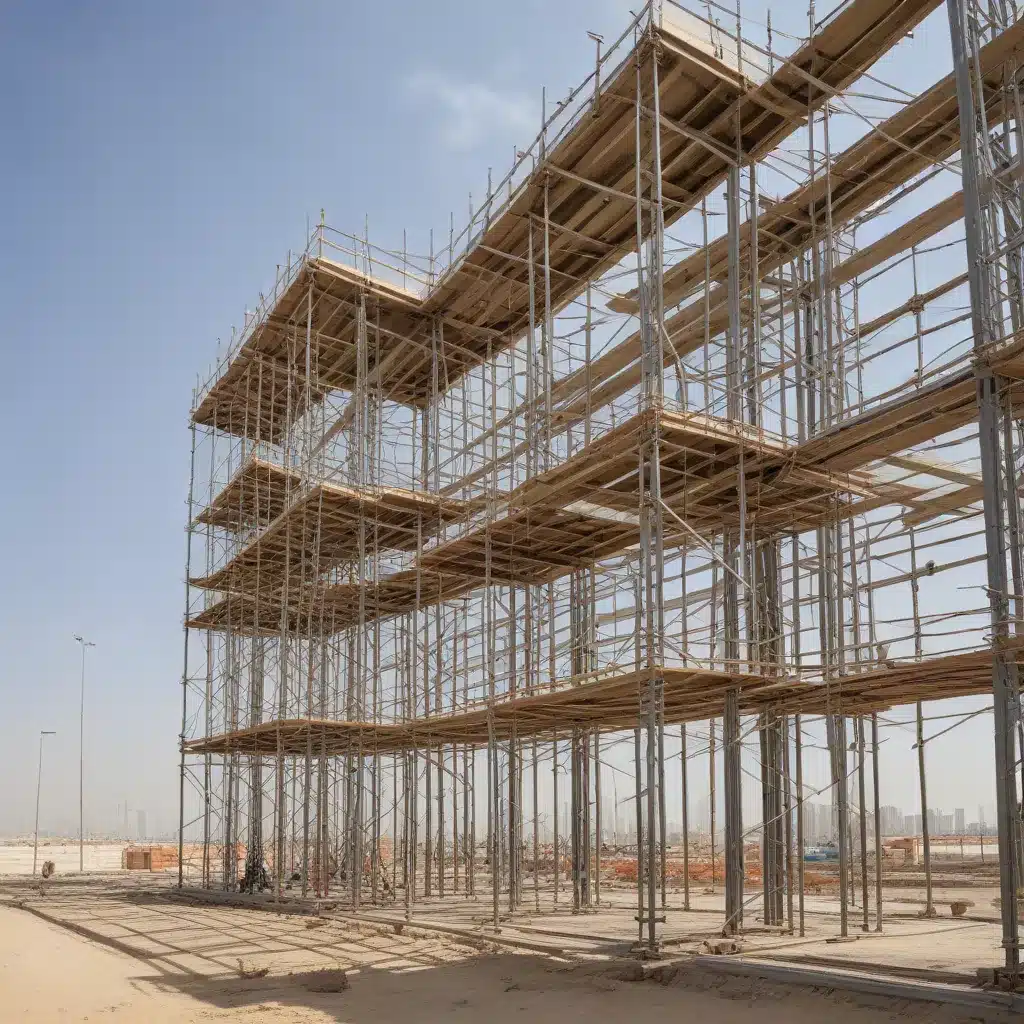
Navigating the UAE’s Scaffolding Regulations: A Comprehensive Guide
Constructing the modern skyline of the United Arab Emirates (UAE) requires a deep understanding of the country’s comprehensive scaffolding regulations. As the construction industry continues to evolve, staying up-to-date with the latest safety standards and cost-effective practices is crucial for project success. In this in-depth article, we’ll explore the regulatory landscape, innovative scaffolding techniques, and practical cost management strategies to help you transform your construction projects in the UAE.
Regulatory Compliance: Ensuring Safety and Efficiency
The UAE has some of the most stringent scaffolding regulations in the region, designed to promote worksite safety and maintain the highest construction standards. At the forefront of these guidelines are the UAE Fire and Life Safety Code of Practice and the UAE Building Code, both of which outline detailed requirements for scaffold design, installation, and inspection.
Scaffold Design and Certification: All scaffolding systems in the UAE must be designed by a qualified engineer and adhere to the load-bearing capacity, member sizes, and bracing specifications outlined in the regulations. Contractors must obtain a Certificate of Conformity from an accredited testing facility before erecting any scaffold on a construction site.
Scaffold Inspection and Maintenance: Regular inspections by trained professionals are mandatory to ensure the ongoing structural integrity of scaffolding. Contractors must maintain meticulous records of these inspections, which should be conducted daily, weekly, and monthly, depending on the complexity of the project. Any necessary repairs or modifications must be performed promptly to maintain compliance.
Worker Training and Personal Protective Equipment (PPE): The UAE’s construction safety regulations mandate comprehensive training for all personnel working on scaffolding, covering topics such as fall protection, load-bearing capacities, and emergency procedures. Additionally, the use of approved PPE, including harnesses, hard hats, and safety boots, is strictly enforced to mitigate the risk of accidents.
By staying vigilant and adhering to these regulatory requirements, construction firms can not only safeguard their workers but also avoid costly penalties and project delays.
Innovative Scaffolding Techniques: Enhancing Efficiency and Safety
As the construction industry in the UAE continues to evolve, innovative scaffolding solutions are emerging that provide greater efficiency, safety, and cost-effectiveness. Here are a few of the cutting-edge techniques gaining traction in the market:
Modular Scaffolding: Modular scaffolding systems, composed of standardized, pre-engineered components, offer a versatile and time-saving alternative to traditional scaffolding. These systems can be quickly assembled and dismantled, reducing labor costs and minimizing disruption to ongoing construction activities. Additionally, modular scaffolds often feature integrated safety features, such as built-in fall protection systems, further enhancing worksite safety.
Suspended Scaffolding: For high-rise projects, suspended scaffolding systems, supported by cables or tracks, provide a more efficient and ergonomic solution compared to conventional scaffolding. These systems allow workers to access hard-to-reach areas, reducing the need for additional equipment and improving productivity. Suspended scaffolds are particularly well-suited for facade work, maintenance, and renovation projects.
Automated Scaffolding: Leveraging the latest advancements in robotics and automation, some construction firms in the UAE are embracing automated scaffolding solutions. These systems use computerized control systems and motorized platforms to erect, adjust, and dismantle scaffolding with minimal human intervention, enhancing safety and reducing labor costs.
BIM-Integrated Scaffolding: The integration of Building Information Modeling (BIM) technology with scaffolding design and planning has revolutionized the construction industry in the UAE. BIM-enabled scaffolding models allow for precise 3D visualization, clash detection, and optimized placement, leading to more efficient and cost-effective scaffold installations.
By exploring these innovative scaffolding techniques, construction companies in the UAE can enhance productivity, improve worker safety, and achieve substantial cost savings throughout the project lifecycle.
Cost Management Strategies: Maximizing Efficiency and Profitability
Effective cost management is crucial for the success of any construction project in the UAE. When it comes to scaffolding, there are several strategies that can help construction firms optimize their expenditures and maintain a competitive edge.
Rental vs. Purchase: For short-term or project-specific scaffolding needs, renting equipment can be a more cost-effective solution than purchasing. Rental providers in the UAE offer a wide range of scaffolding systems, often with maintenance and transportation services included, allowing contractors to avoid the upfront capital investment and ongoing storage and maintenance costs.
Modular Scaffolding Cost Savings: As mentioned earlier, modular scaffolding systems can provide significant cost savings compared to traditional scaffolding. By reducing labor requirements, streamlining installation and dismantling, and minimizing material waste, modular scaffolds can help construction firms achieve substantial cost reductions, typically in the range of 15-30% of the overall scaffolding budget.
Bulk Procurement and Volume Discounts: Leveraging the purchasing power of large-scale projects, construction firms can negotiate bulk discounts with scaffolding suppliers and equipment rental providers in the UAE. By consolidating their scaffolding needs across multiple projects, contractors can secure favorable pricing and better manage their overall scaffolding expenditures.
Maintenance and Refurbishment: Proper maintenance and refurbishment of scaffolding equipment can extend its useful life, reducing the need for frequent replacement. Investing in regular inspections, repairs, and refurbishments can result in substantial cost savings over the long term, as construction firms can maximize the return on their scaffolding investments.
By adopting these cost management strategies, construction companies in the UAE can enhance their overall profitability and remain competitive in the fast-paced construction market.
Conclusion
The UAE’s construction industry is a testament to the country’s relentless pursuit of innovation and excellence. As the demand for large-scale, high-profile projects continues to grow, the need for effective scaffolding solutions has become increasingly critical. By understanding the regulatory landscape, embracing cutting-edge scaffolding techniques, and implementing strategic cost management practices, construction firms in the UAE can transform their projects, enhance worker safety, and drive sustainable growth.
Shera Ahmed Scaffolding, a leading provider of scaffolding services in the UAE, is at the forefront of this transformation. With a deep commitment to compliance, safety, and cost-effectiveness, the company continues to push the boundaries of what’s possible in the construction industry. By partnering with Shera Ahmed Scaffolding, construction firms in the UAE can unlock the full potential of their projects and elevate the nation’s built environment to new heights.
